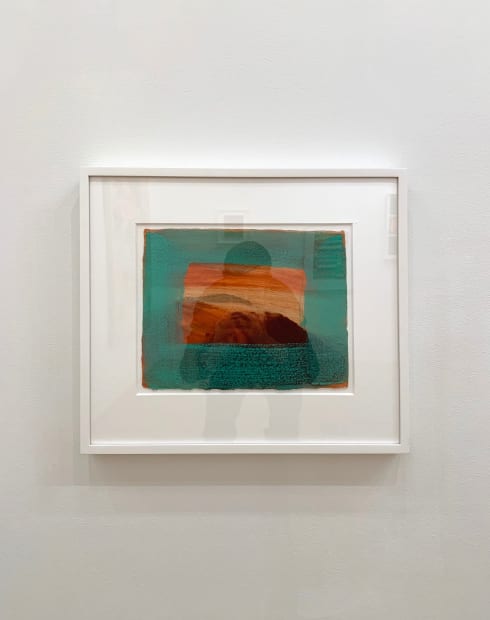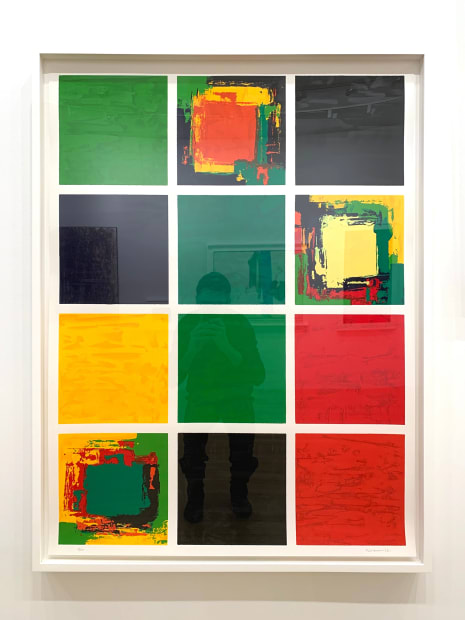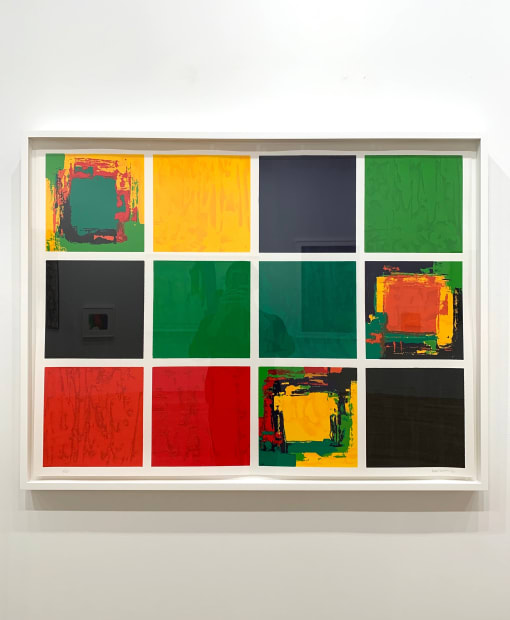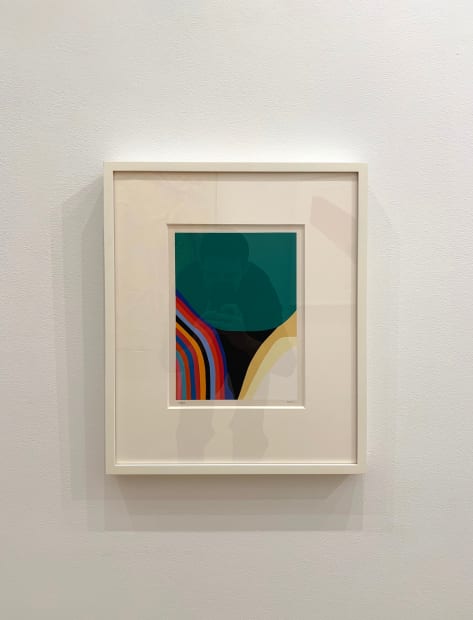-
Chroma
Choreography of Space and Color -
Upsilon Gallery is pleased to announce a group exhibition of seminal works titled Chroma: Choreography of Space and Color, on view from November 11, 2022 to January 7, 2023 (extended until February 25, 2023). An opening reception will be held at 23 East 67th Street on Friday, November 11th, from 6:00-8:00 PM.
Chroma explores the evolving practice of paint handling and color use in contemporary art, illustrating the rich interplay of tradition and innovation among 12 artists. The exhibition offers an exploratory appreciation of color in painting and print.
Chroma draws widely from local sources, including private collectors, galleries, and the artists themselves, and it includes Alberto Burri, Jim Dine, Friedel Dzubas, Sam Francis, Howard Hodgkin, Clyde Hopkins, Paul Jenkins, Sol LeWitt, Osvaldo Mariscotti, Larry Poons, Susan Roth and Kikuo Saito. -
 Installation view of Chroma: Choreography of Space and Color, Upsilon Gallery, New York, 2022
Installation view of Chroma: Choreography of Space and Color, Upsilon Gallery, New York, 2022 -
The focus of attention in the world of contemporary art began to shift from Paris to New York after World War II and the development of American abstract expressionism. During the late 1940s and early 1950s Clement Greenberg was the first art critic to suggest and identify a dichotomy between differing tendencies within the abstract expressionist canon. Taking issue with Harold Rosenberg (another important champion of abstract expressionism), who wrote of the virtues of action painting in his article American Action Painters published in the December 1952 issue of ARTnews, Greenberg observed another tendency toward all-over color or color field in the works of several of the so-called "first generation" abstract expressionists. However, by the late 1950s and early 1960s young artists had already began to break away stylistically from abstract expressionism; experimenting with new ways of making pictures; and new ways of handling paint and color.
-
-
In the early 1960s several and various new movements in abstract painting were closely related to each other, and superficially were categorized together; although they turned out to be profoundly different in the long run. Some of the new styles and movements that appeared in the early 1960s as responses to abstract expressionism were called: Washington Color School, hard-edge painting, geometric abstraction, minimalism, and color field.
-

-

-
Chroma focuses especially on color field and lyrical abstraction. An important distinction that made color field painting different from abstract expression was the paint handling. The most basic fundamental defining technique of painting is application of paint and the color field painters revolutionized the way paint could be effectively applied.
-
-
-

-

-

-

-

-
Color field painting sought to rid art of superfluous rhetoric. Artists like Larry Poons, Friedel Dzubas, and Kikuo Saito, and others often used greatly reduced formats, with drawing essentially simplified to repetitive and regulated systems, basic references to nature, and a highly articulated and psychological use of color. In general these artists eliminated overt recognizable imagery in favor of abstraction. Certain artists quoted references to past or present art, but in general color field painting presents abstraction as an end in itself. In pursuing this direction of modern art, these artists wanted to present each painting as one unified, cohesive, monolithic image often within series' of related types.
-

-

-

-
-
Chroma: Choreography of Space and Color
Past viewing_room











